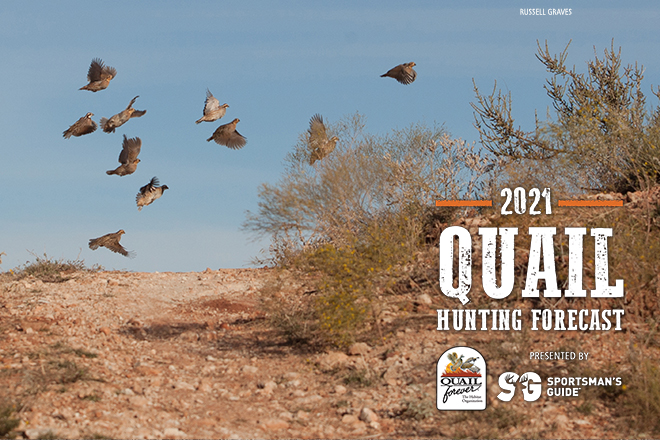 By Oliver Hartner
By Oliver Hartner
With the data on hand, the optimal weather conditions and whistle counts suggest a favorable forecast for Palmetto State quail hunting. Years of successful habitat management across the state through the South Carolina Bobwhite Initiative continue to benefit bobwhite quail on both private and public properties.
WEATHER AND CONDITIONS
Another mild winter brought average temperatures that seem to have benefited the quail, and precipitation patterns produced seasonal averages across the state. Michael Hook, Quail Coordinator and Small Game Program Leader for the South Carolina Department of Natural Resources (SCDNR), says, “Managers took advantage of the good weather and found a good many burn days in late February and early March. Many people were making up for last year’s lack of burning due to rain and covid restrictions. We received a good bit of rain across the state in the middle part of spring so it really jump started the brood habitat in these fresh burns and across the landscape. The rains let up in the early summer and the brooding conditions have been favorable over most of the summer.”
Stable levels of precipitation during spring and summer seem to have produced favorable conditions for the quail this fall. Hook says, “So far, we’ve managed to avoid a hurricane or tropical depression. If that holds true for the rest of fall we should be sitting pretty for the upcoming season. Anecdotally, folks are seeing birds across the state and many people are reporting brood sightings. Just from the number of reports I’m hearing, I’d venture a guess that our reproduction has been quite good this year.”
HABITAT, BROODS AND COUNTS
Where land management practices have been implemented, habitat continues to look favorable for bobwhite quail. Many places are covered in beggarweed, rag weed, and partridge pea on the Wildlife Management Areas (WMAs) and in parts of the Sumter National Forest. Private landowners who have been doing their part are also reaping the benefits.
After South Carolina completed its annual whistling cock survey, analysts found it was the highest count they’ve had in several years. “Participants survey 12 points on a six mile route and document the whistling males they hear. Approximately 75 routes were run this year, and it was the highest number of whistling males heard since 2012. You can find all of our small game reports at
https://www.dnr.sc.gov/hunting/smallgamesurveys/reports.html,” Hook says. SCDNR is still gathering data from the brood survey for quail and wild turkey, and they will make that information available on the SCDNR website as soon as possible.
TOP SPOTS
Hook has seen the Pee Dee area in the eastern part of South Carolina as well as the Piedmont region near the center part of the state remain top producers the last couple of years and expects that trend to continue this year. Hook also believes lower parts of the state could be productive, saying, “While the lower coastal plain was down last year I expect that with the good winter and summer conditions, the lower coastal plain region should be making a comeback and may be a good place to start this year. The South Carolina Bobwhite Initiative has four focal areas that can be found at
http://scbobwhites.org.”
INSIDER TIP
For successful hunting in the Palmetto State, Hook advises, “Constantly update your maps, whether electronic or paper, as conditions change on the ground. I mark likely and potential spots as I am out scouting or hunting. I keep them updated as the habitat changes and ages out. For example, if I’m driving around and see a clearcut I will note that on a map. It won’t be good bird woods the first year but for year 3 to 10 it’s likely worth a visit. Keeping locations across the state keeps me in plenty of huntable woods all season.”